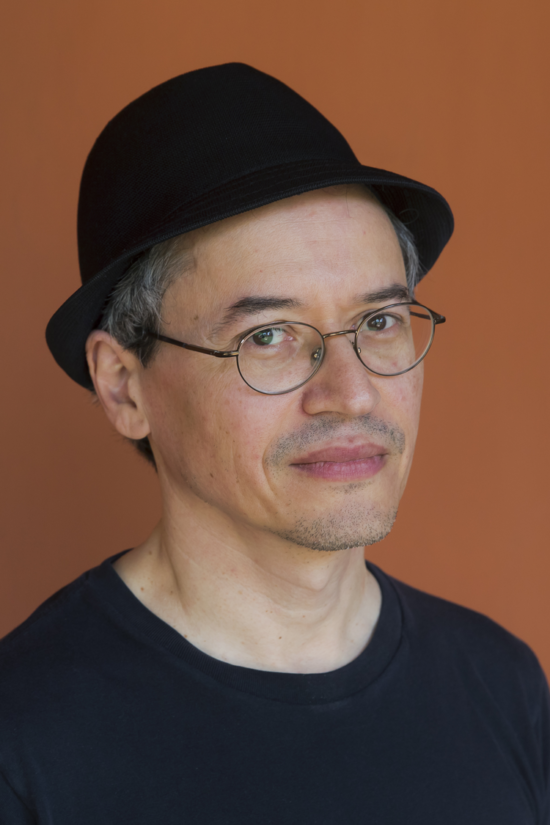

By Judah Breitbach
Editors Note: Sacco is the 2019 Writer in Residence.
That kind of leads to the question, why comics at all? In a sense you’re combining visual journalism with the written word; why not just write a book and add a few photos? Why do you bend towards comics?
Well, I mean, on a personal level, I’ve been doing comics since I was a kid and I now I’ve begun to think in terms of comics. That’s kind of what I do. There was a time, when I was in university, I actually studied journalism and what I wanted to do was prose writing. I wanted to write hard news. When I got out of school I didn’t end up doing that because it was difficult to get those kinds of jobs. I never really thought, even though I had been drawing comics since I was a kid, that that was an avenue for a living. It just didn’t cross my mind. Once I found myself not in the journalism world as I saw myself I kind of withdrew from it to see if I could make a living doing comics. I was doing a combination of comics, posters for bands and album covers and stuff like that. At some point I ended up visiting the Middle East and I thought I would do a comic book series about that, as ridiculous as that sounds. No one had really done journalism in comics. At some point you’re kind of trapped in who you are, in the sense that I was a cartoonist and I started to think of everything through the prism of comics. I began to think about getting back into journalism, not as a prose writer trying to get magazine gigs, but as what I had become, which is a cartoonist. In a lot of ways it wasn’t some well thought out concept of putting journalism and comics together. It sort of developed organically in the twists and turns of life. To me, I realize now, as time’s gone by, I see the strength of the form for telling journalistic stories. One of the main strengths is visual, it hits you viscerally, just [like] a good documentary film can do. You open the book and the pictures can take you, not just to a different place, but perhaps to a different time. You can go back into time with comics quite easily. So I saw the strength in being able to visualize and tell other people’s stories. It’s not a dry medium. I think the multiple image thing really helps too. Photography is basically premised around the idea that one picture tells a complete story; that’s power. Comics use many, many images to build up, almost like a jigsaw puzzle, the atmosphere of a place and what a place can look like. That’s what I try to do with, let’s say, books about refugee camps in Gaza. It’s not that one drawing is going to stand in for the whole camp. It takes many different drawings, many different angles, many different facets of the place are shown, one image at a time, to build a place. That’s the power of comics, I think.
You were in the Middle East embedded with the Marines in, I believe Iraq?
Correct.
How do you start a cartoon, as base as that sounds — do you take a few photos and take a few notes and sit down later and start to draw? Or do you draw as you’re interviewing people?
If you saw me working in the field, I would basically be behaving like a prose journalist in that I really privilege doing sit-down interviews where I’m recording someone talking. I don’t tend to do as much sketching as you’d think. In fact, I often won’t do sketches for days when I’m working because it’s not how I want to spend my time. I know other cartoonists who will use their sketching as a way of breaking the ice with people. They start drawing and people come up to them and have a look over their shoulder and ask what they’re doing. That can work, but for me, I really just want to talk to people. I will take photos for reference. I sketch when it’s really necessary to sketch something that can’t be captured in a photograph. I also keep a journal — so it’s not just interviews. A significant part of the stories I do are based on things that happen that aren’t part of the interviewing process. You can be in the street and something can happen and you could just be observing it and jotting down notes that can later be turned into your journal entry. Anyway, I collect all this material. I come back home. I go through all my notes, and I very carefully transcribe all my interviews and index all of my journal entries and interviews. It’s a very long process that takes weeks.
Now I can pick out a subject and know which journal it’s in, what page, which interview, who said what, that kind of thing. I have a little system I have for myself. Then I write the script, usually it’s complete by the time I start drawing. I seldom ever start drawing before the entire script is written. That’s because, often, with non-fiction, if you start drawing and you haven’t finished the writing you end-up thinking, oh, I should’ve mentioned this before, this is obviously the proper place to mention this. You notice all the loose ends that you should’ve had a preamble for earlier. Then you can really mess up — and I have messed up trying it that way. Once I start drawing, I basically nail myself to the desk and just draw for years.
